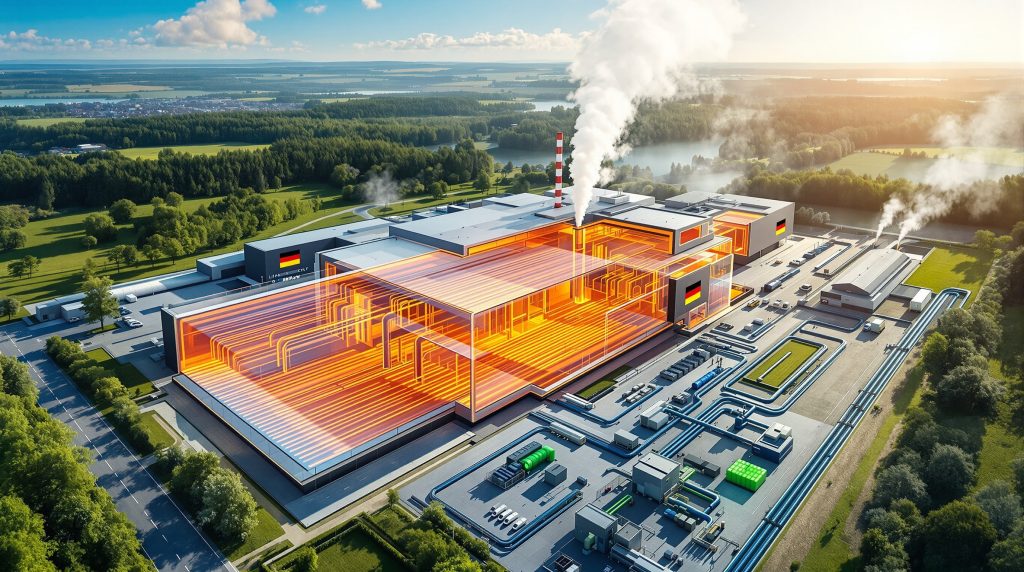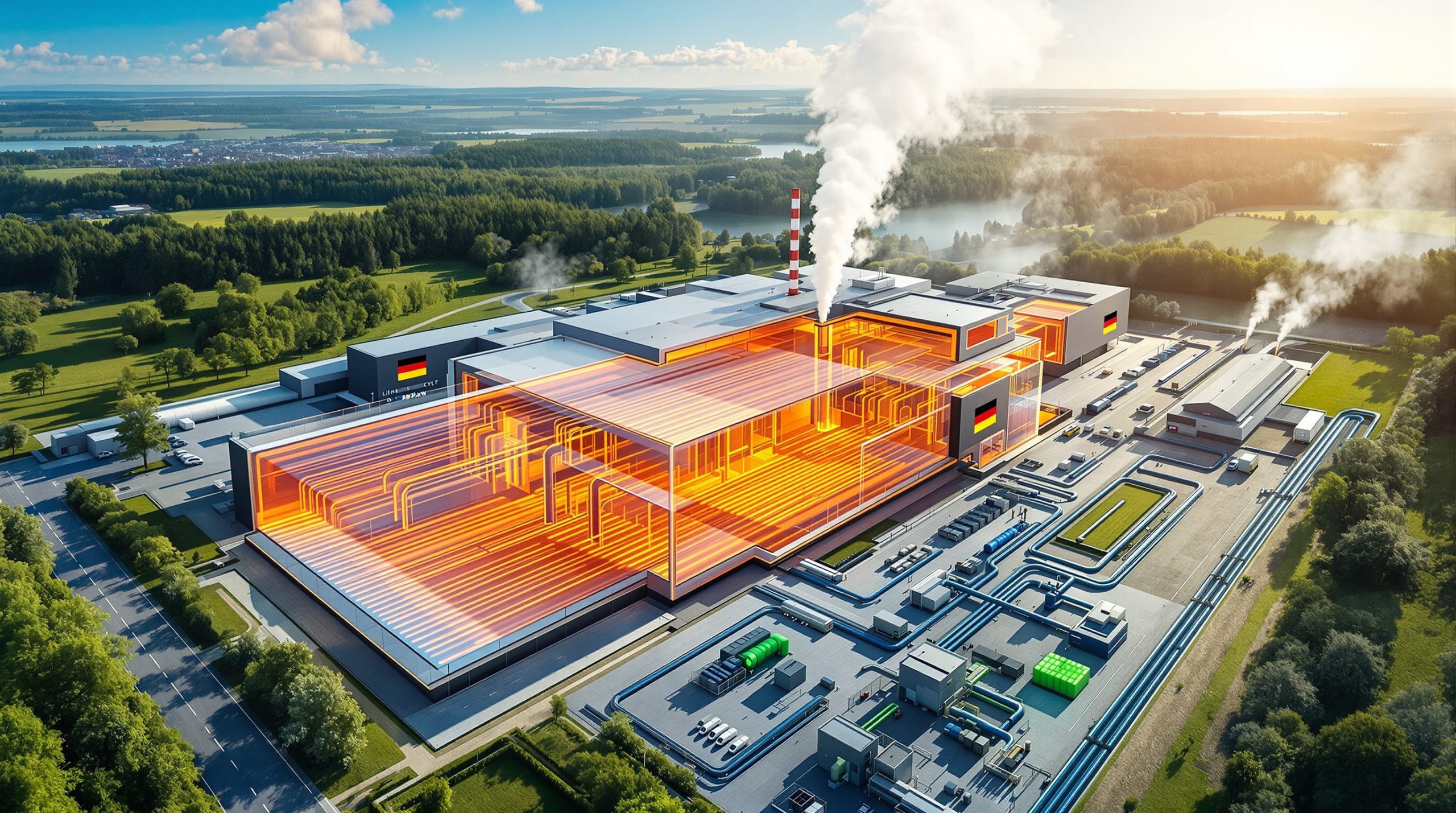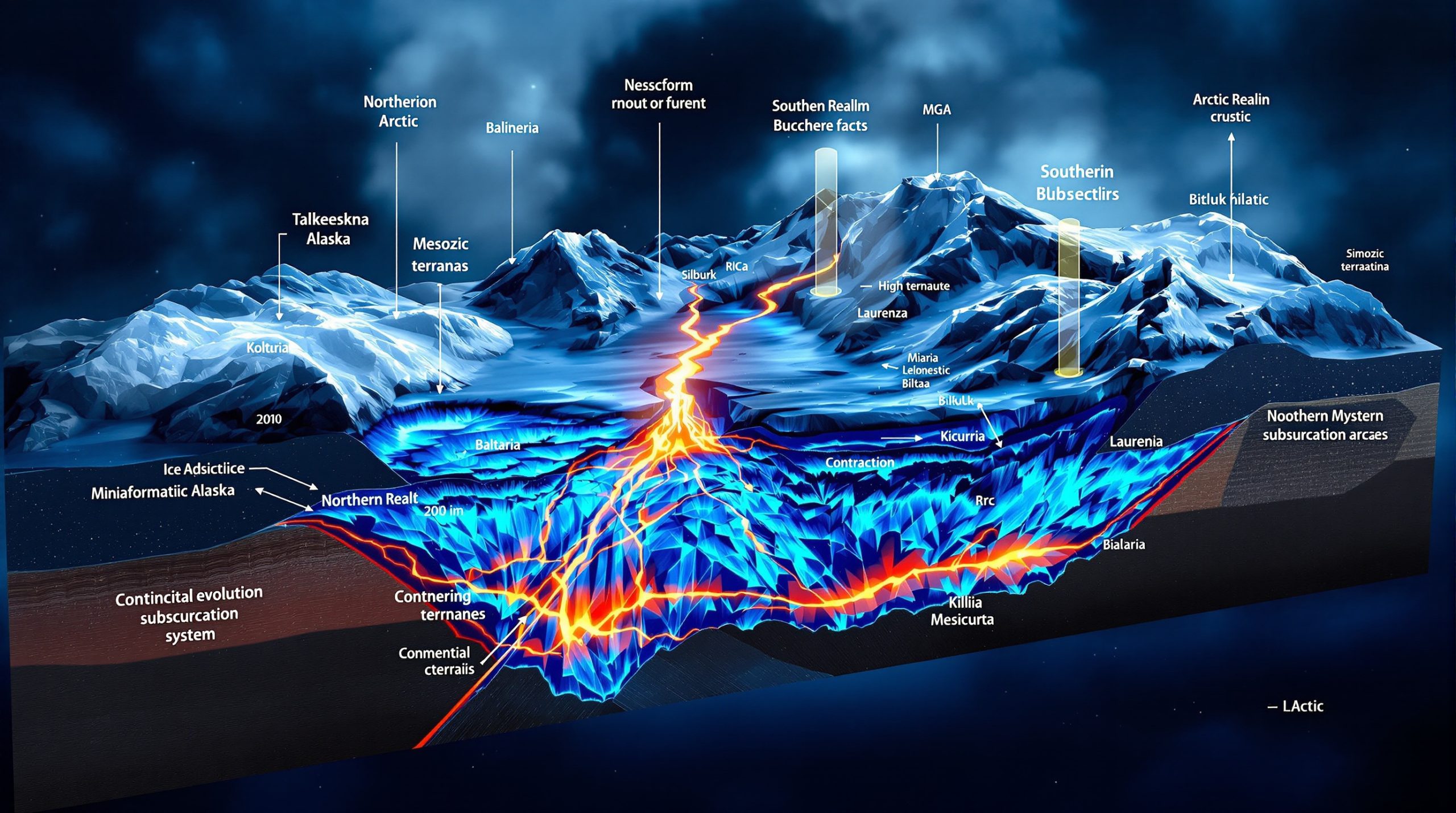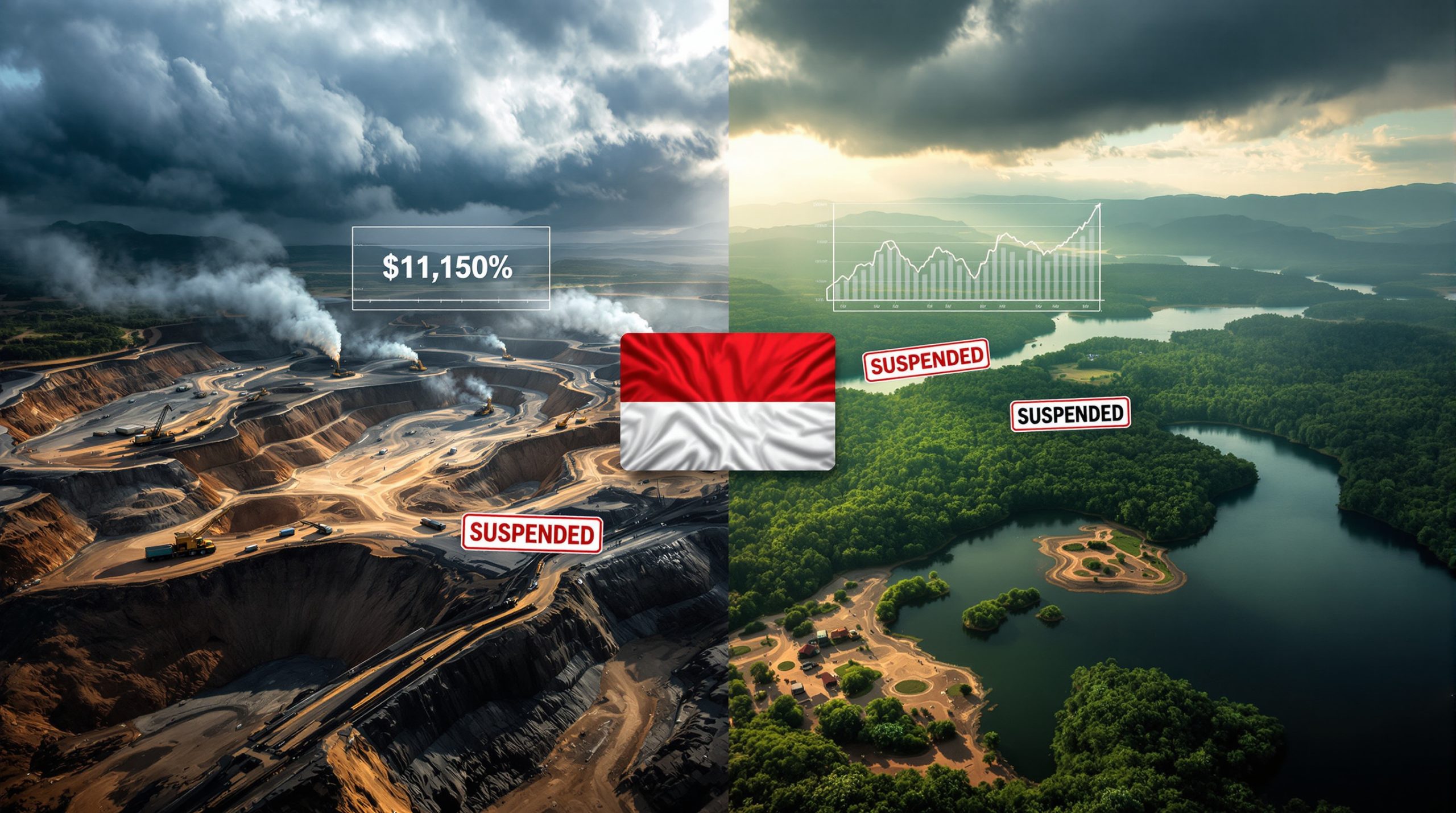Landau Geothermal Power Plant: Pioneering Renewable Energy in Germany
The Landau geothermal power plant stands as a testament to Germany's commitment to renewable energy innovation. Located in the Upper Rhine Graben region, this facility harnesses Earth's natural heat to generate clean electricity and provide district heating, while pioneering integrated lithium extraction to support Europe's electric vehicle revolution. With ongoing lithium industry innovations, the Landau plant represents a significant advancement in sustainable energy production.
How Does the Landau Geothermal Power Plant Work?
The Landau geothermal facility utilizes binary cycle technology, perfectly suited for the moderate-temperature geothermal resources found in the Upper Rhine Graben. This sophisticated process begins with extracting naturally heated water from deep underground reservoirs through production wells reaching approximately 3,000 meters below the surface.
The geothermal fluid, which reaches temperatures around 159°C, circulates through a closed system of heat exchangers where its thermal energy transfers to a secondary working fluid with a lower boiling point. This secondary fluid—typically an organic compound—vaporizes and drives turbines connected to generators, producing electricity without directly using the geothermal brine itself.
After energy extraction, the cooled geothermal water is reinjected back into the reservoir through dedicated injection wells, creating a sustainable closed-loop system that maintains reservoir pressure while minimizing environmental impact. Furthermore, the facility also explores potential for lithium mining from brines, adding another dimension to its sustainable operations.
Key Technical Specifications
- Electrical Capacity: 3 megawatts
- Geothermal Fluid Temperature: Approximately 159°C
- Well Depth: Around 3,000 meters
- Technology Type: Binary cycle (Organic Rankine Cycle)
- Operational Since: November 2007
- Annual Energy Production: 275 gigawatt-hours
The binary cycle technology implemented at Landau offers significant advantages over direct steam systems, particularly its ability to generate power from moderate-temperature resources while maintaining minimal emissions and surface footprint.
What Makes the Landau Plant Significant for Germany's Energy Transition?
The Landau geothermal power plant represents a critical milestone in Germany's Energiewende (energy transition) strategy. Unlike intermittent renewable sources such as wind and solar, geothermal energy provides consistent baseload power regardless of weather conditions or time of day—operating with capacity factors above 90%, comparable to conventional power plants.
This reliability factor addresses one of the major challenges in Germany's renewable energy landscape: the need for stable, dispatchable power that can complement variable renewables and support grid stability. By providing a consistent energy supply, the Landau facility helps balance the broader renewable energy mix.
Beyond electricity generation, the plant significantly contributes to decarbonizing heating systems by providing district heating to Landau—addressing one of the most challenging sectors to decarbonize in Germany's energy landscape. This dual-purpose functionality maximizes resource utility and economic efficiency while delivering substantial decarbonisation benefits to the community.
Environmental Impact Metrics
- CO₂ Emissions Avoided: Approximately 11,000 tonnes annually
- Equivalent to: Removing 2,400 cars from the road
- Homes Powered: Supplies thousands of local households with clean electricity
- Heating Capacity: Provides renewable heat for residential and commercial buildings
- Resource Sustainability: Minimal land use compared to other renewable technologies
The plant's urban location demonstrates how geothermal energy can be integrated into existing communities, providing both electricity and heat with minimal visual impact or disruption to local residents.
How Is Vulcan Energy Transforming the Landau Facility?
Vulcan Energy Resources has initiated a comprehensive €110 million engineering, procurement, and construction (EPC) contract to significantly expand and modernize the Landau geothermal power plant. This transformation involves strategic collaboration with industry specialists: Turboden, which brings expertise in Organic Rankine Cycle systems, and ROM Technik, which will manage contractors and oversee installation services.
The contract, structured on a fixed lump-sum turnkey basis, encompasses civil works, site preparation, and the construction of key infrastructure including turbines, pumps, heat exchangers, and associated equipment. This arrangement minimizes project risk while ensuring comprehensive delivery of all required components.
What makes this expansion truly revolutionary is the integration of innovative lithium extraction technology alongside traditional geothermal operations. This dual-purpose approach will enable the production of 24,000 tonnes of lithium hydroxide annually from the geothermal brine—sufficient to supply batteries for approximately 500,000 electric vehicles each year. As critical minerals demand continues to rise globally, this integrated approach offers a sustainable solution to resource scarcity.
Cris Moreno, Vulcan's Managing Director, has described this project as "a key component of our operation" and "yet another milestone in our aim to deliver a local, low-cost source of sustainable lithium for the European battery supply chain." This statement underscores the strategic importance of the facility not just for energy production but for European industrial sovereignty in battery materials.
Expansion Project Components
| Component | Details |
|---|---|
| Contract Value | €110 million |
| Project Structure | Fixed lump-sum turnkey basis |
| Key Partners | Turboden and ROM Technik |
| Expected Completion | Following financing closure (projected end of 2025) |
| Infrastructure Elements | Turbines, pumps, heat exchangers, civil works, site preparation |
| Annual Lithium Production | 24,000 tonnes of lithium hydroxide |
| EV Battery Supply Capacity | 500,000 vehicles annually |
The agreement will take effect once Vulcan finalizes financing, expected by the end of 2025, positioning the project as part of Europe's broader strategy to secure critical battery materials from domestic sources.
What Is the HEAT4LANDAU Project?
The HEAT4LANDAU initiative represents a transformative effort to make Landau's district heating network nearly climate-neutral by 2026-2027. With substantial federal funding of approximately €100 million, this project will significantly expand the geothermal heating infrastructure throughout the city.
This ambitious undertaking aims to replace conventional fossil fuel-based heating systems with renewable geothermal heat, dramatically reducing the carbon footprint of Landau's urban environment. The project demonstrates how geothermal resources can be leveraged beyond electricity generation to address broader climate goals in the heating sector—one of the most difficult areas to decarbonize in developed economies.
The HEAT4LANDAU project plans to extend district heating pipelines to previously unserved areas of the city, creating connection points for residential buildings, commercial properties, and industrial facilities. This expanded infrastructure will enable a systemic transition away from individual heating systems that typically rely on natural gas or heating oil.
Project Timeline and Milestones
- Federal Funding Secured: €100 million
- Implementation Period: 2025-2027
- Climate Neutrality Target: 2027
- Infrastructure Development: New distribution networks and connection points
- Expected Carbon Reduction: Significant decrease in heating-related emissions
By addressing both electricity and heat production simultaneously, Landau is positioning itself as a model for holistic energy transition at the municipal level, demonstrating how mid-sized European cities can leverage local geological assets to achieve ambitious climate targets.
What Technical Challenges Has the Landau Plant Overcome?
The Landau facility has successfully navigated several significant technical and regulatory challenges since its inception. In 2009, the plant faced issues related to induced seismicity—minor earthquakes potentially triggered by geothermal operations. These events, while minor (registering below 2.7 on the Richter scale), led to temporary operational adjustments and the implementation of enhanced monitoring systems.
The facility's response to these challenges has been exemplary, establishing protocols that have since become industry standards for geothermal development in Germany. These innovations include sophisticated seismic monitoring networks that provide real-time data on any ground movement, adjusted injection rates that maintain reservoir pressure without creating excessive stress, and revised operational protocols that maintain the delicate balance between energy production and geological stability.
Another significant challenge was managing the highly mineralized geothermal fluid, which contains dissolved solids that can cause scaling and corrosion in pipes and heat exchangers. Engineers developed specialized materials and maintenance protocols to address these issues, extending equipment lifespan and improving operational efficiency. Such solutions highlight the importance of continued mining innovation trends across the energy sector.
Mitigation Strategies Implemented
- Continuous Seismic Monitoring: Advanced networks to detect any unusual activity
- Pressure Management Protocols: Carefully controlled injection rates
- Regulatory Compliance: Implementation of liability insurance requirements
- Community Engagement: Transparent communication with local stakeholders
- Technical Adaptations: Modified operational parameters based on geological feedback
- Materials Innovation: Specialized components resistant to corrosive brine
These technical solutions demonstrate how early challenges in geothermal development can be systematically addressed through science-based approaches, creating pathways for broader adoption of the technology throughout similar geological regions.
How Does the Landau Plant Compare to Other European Geothermal Facilities?
Within the European geothermal landscape, the Landau facility stands out for its integration of power generation, district heating, and lithium extraction—a combination rarely found in other installations. This multi-purpose approach maximizes both economic returns and environmental benefits from each well, setting a new standard for resource efficiency.
While countries like Iceland and Italy have larger geothermal capacities, their resources are primarily high-temperature systems suitable for direct steam production. In contrast, Landau utilizes moderate-temperature resources through binary cycle technology, demonstrating how regions previously considered marginal for geothermal development can effectively harness this energy source.
The facility's location in the Upper Rhine Graben positions it within a region with significant untapped geothermal potential. This geological formation extends through parts of Germany, France, and Switzerland, potentially supporting numerous similar installations that could collectively form a substantial renewable energy resource for central Europe.
European Geothermal Comparison
| Country | Total Geothermal Capacity | Notable Features |
|---|---|---|
| Iceland | >750 MW | High-temperature resources, extensive district heating |
| Italy | >900 MW | World's first geothermal power plant (Larderello) |
| Turkey | >1,500 MW | Rapid recent development |
| Germany | ~40 MW | Focus on moderate temperature resources with binary cycle technology |
| France | ~20 MW | Similar geological conditions to Landau in Alsace region |
What sets Landau apart is not its size but its pioneering approach to maximizing value from moderate-temperature resources. While Iceland and Italy benefit from exceptional geological conditions, the Landau model is more widely replicable across regions with similar moderate-temperature reservoirs.
What Role Does Lithium Extraction Play in the Facility's Future?
The integration of lithium extraction technology represents a game-changing evolution for the Landau geothermal power plant. By harvesting lithium from the same geothermal brine used for energy production, Vulcan Energy is creating a zero-carbon lithium source critical for European battery manufacturing—addressing a strategic vulnerability in the continent's electric vehicle supply chain.
Traditional lithium production methods involve either open-pit mining (hard rock lithium) or evaporation ponds in desert environments (brine extraction), both of which have significant environmental impacts including water consumption, habitat disruption, and carbon emissions. In contrast, the Landau approach extracts lithium from geothermal brine as part of an already operational renewable energy system, dramatically reducing the environmental footprint.
This innovative approach, sometimes called "brine mining," uses the existing geothermal infrastructure, making it both economically efficient and environmentally superior to conventional lithium production methods. The process employs direct lithium extraction (DLE) technology that selectively captures lithium ions from the geothermal fluid before it's reinjected into the reservoir.
Lithium Production Metrics
- Annual Production Target: 24,000 tonnes of lithium hydroxide
- Carbon Footprint: Near-zero compared to conventional sources
- EV Supply Capacity: Batteries for approximately 500,000 vehicles annually
- Strategic Value: Reduces European dependency on imported lithium
- Production Method: Direct lithium extraction from geothermal brine
- Water Usage: Minimal compared to evaporative brine operations
This integrated approach to renewable energy and critical mineral production represents a potential model for future resource development—one that maximizes value while minimizing environmental impact, addressing two critical challenges of the energy transition simultaneously.
What Economic Benefits Does the Plant Bring to Landau?
The geothermal power plant in Landau delivers substantial economic advantages to the community beyond its environmental contributions. As a long-term infrastructure asset with an operational lifespan measured in decades, it provides stable employment opportunities in operations, maintenance, and technical services.
The current expansion project will further enhance local economic activity through construction jobs and service contracts. According to industry standards, projects of this scale typically generate hundreds of construction positions and dozens of permanent roles, with additional indirect employment through the supply chain and supporting services.
The district heating component offers residents and businesses access to price-stable renewable heat, insulating them from volatile fossil fuel markets. This price stability represents a significant economic advantage, particularly during periods of energy market turbulence as witnessed in recent European gas price fluctuations.
Local Economic Impacts
- Direct Employment: Technical and operational staff
- Indirect Jobs: Supply chain and service providers
- Energy Price Stability: Reduced exposure to fossil fuel price fluctuations
- Knowledge Economy Growth: Development of specialized expertise
- Regional Reputation: Enhanced profile as a clean energy leader
- Industrial Attraction: Drawing complementary businesses to the area
Additionally, the facility has positioned Landau as a center for geothermal expertise, attracting related businesses and research activities that contribute to the local knowledge economy. This clustering effect creates a virtuous cycle of innovation and economic development around renewable energy technology.
What Future Developments Are Planned for the Landau Geothermal Plant?
The current €110 million expansion represents just one phase in an ambitious growth trajectory for the Landau facility. Future developments include drilling additional wells to increase both heat and electricity production capacity, expanding the lithium extraction operations, and potentially integrating advanced energy storage systems to enhance grid flexibility.
Vulcan Energy's forward-looking approach encompasses these expansions as part of a broader vision to create an integrated renewable energy and battery materials hub. This strategic direction aligns with European Union policies supporting both renewable energy expansion and securing critical material supply chains domestically.
Future plans may also include the application of enhanced geothermal system (EGS) technologies, which could increase the productivity of existing wells and potentially tap deeper, hotter resources. These advanced techniques could significantly expand the facility's capacity without requiring proportional increases in surface infrastructure.
Planned Expansion Elements
- Additional Geothermal Wells: Increasing energy production capacity
- Enhanced Lithium Extraction: Scaling up zero-carbon lithium production
- District Heating Network Expansion: Connecting more buildings to renewable heat
- Potential Energy Storage Integration: Adding grid-balancing capabilities
- Research and Development Activities: Testing next-generation geothermal technologies
- Digitalization Initiatives: Implementing advanced monitoring and optimization systems
These forward-looking plans position the Landau facility as not just a current producer of renewable energy and battery materials, but as an evolving center of innovation in the clean energy landscape.
FAQ: Landau Geothermal Power Plant
Is geothermal energy truly renewable?
Yes, geothermal energy is classified as renewable because the heat generated within the Earth is continuously produced through radioactive decay of minerals and from the original formation of the planet. When properly managed with sustainable extraction rates and reinjection of fluids, geothermal resources can provide energy indefinitely on human timescales. Unlike fossil fuels, which deplete permanently once consumed, geothermal reservoirs naturally recharge through ongoing geological processes.
How does geothermal energy compare to solar and wind in reliability?
Geothermal power offers a significant advantage over solar and wind by providing consistent baseload power regardless of weather conditions or time of day. While solar and wind are intermittent resources that require storage or backup generation, geothermal plants typically operate with capacity factors above 90%, comparable to conventional power plants. This reliability makes geothermal particularly valuable in a diverse renewable energy portfolio, as it can help balance the variability of other renewable sources.
What makes the Rhine Graben region suitable for geothermal development?
The Upper Rhine Graben features a geological rift system where the Earth's crust has thinned, allowing heat to rise closer to the surface. This region also contains permeable rock formations saturated with hot water, creating ideal conditions for geothermal development. The graben structure—a depressed block of land bordered by parallel faults—creates natural pathways for water circulation and heat transfer, enabling access to geothermal resources at economically viable drilling depths of 2,500-4,000 meters.
Could similar geothermal plants be built elsewhere in Germany?
Yes, several regions in Germany have suitable geology for geothermal development, particularly the Molasse Basin in southern Bavaria, the North German Basin, and other parts of the Rhine Graben. However, each location requires specific geological assessments to determine viability, and not all areas have the same favorable conditions found in Landau. The expansion of geothermal energy in Germany depends on both geological suitability and regulatory frameworks that support development while ensuring environmental protection and community engagement.
How does lithium extraction from geothermal brines work?
The process involves selectively capturing lithium ions from the geothermal brine using specialized absorption materials or ion exchange technologies. After the brine passes through the power generation system, it enters a lithium extraction circuit where lithium is separated before the brine is reinjected. The concentrated lithium solution is then processed into battery-grade lithium hydroxide through additional purification steps. This integrated approach allows for lithium production with minimal additional environmental impact beyond the existing geothermal operation.
Further Exploration:
Readers interested in learning more about geothermal energy development in Germany can also explore related educational content available from The Market Online, which offers additional perspectives on renewable energy projects in Europe and their implications for both environmental sustainability and investment opportunities. For more insights into Landau's geothermal developments, the Landau City Council's approval of land purchases for Vulcan's facility demonstrates the local government's commitment to this sustainable energy source.
Want to Discover the Next Major Mineral Opportunity?
Discovery Alert's proprietary Discovery IQ model provides real-time notifications on significant ASX mineral discoveries, empowering investors to capitalise on opportunities before the broader market. Explore our dedicated discoveries page to understand how historic mineral discoveries have generated substantial returns for early investors.




